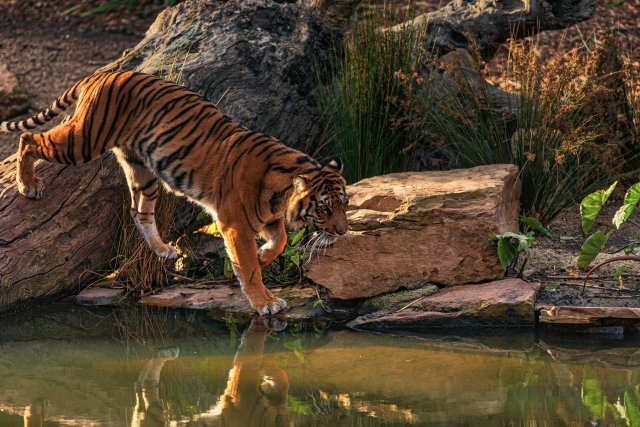Are Tigers Endangered? Protecting the King of Cats
King of Cats
Tigers, the majestic creatures that once roamed freely across vast territories, are now facing the threat of extinction. With their population dwindling rapidly, it is crucial to understand the reasons behind their decline and take immediate action to protect these magnificent animals. In this article, we will explore the current status of tigers, the main threats they face, and the conservation efforts being made to ensure their survival.
The Current Status of Tigers
Tigers are classified as an endangered species by the International Union for Conservation of Nature (IUCN). According to the latest estimates, there are only around 3,900 tigers left in the wild, a stark contrast to the hundreds of thousands that once roamed the forests of Asia. This decline is primarily attributed to habitat loss, poaching, and illegal wildlife trade.
The Main Threats to Tigers
Habitat Loss
King of cats: One of the biggest threats to tigers is the loss of their natural habitat. As human populations expand and industries encroach upon forested areas, tiger habitats are being destroyed at an alarming rate. Deforestation for agriculture, logging, and urbanization not only reduces the available space for tigers but also disrupts their prey base, leading to food scarcity and increased competition.
Poaching and Illegal Wildlife Trade
Poaching is another major factor contributing to the decline of tiger populations. Tigers are hunted for their skin, bones, and other body parts, which are highly valued in traditional medicine and as luxury items. Despite international bans on tiger trade, illegal wildlife trafficking continues to thrive, driven by the high demand for tiger products in certain regions.
Conservation Efforts
Recognizing the urgent need to protect tigers, various organizations and governments have initiated conservation efforts to safeguard these iconic creatures. Here are some notable examples:
Tiger Reserves and Protected Areas
Establishing tiger reserves and protected areas is crucial for ensuring the survival of these magnificent animals. These designated areas provide a safe haven for tigers, allowing them to thrive without human interference. For instance, India, home to the largest population of tigers, has set up numerous tiger reserves, such as the Jim Corbett National Park and Bandipur National Park, to protect these endangered species.
Anti-Poaching Measures
To combat poaching, governments and conservation organizations have implemented anti-poaching measures. These include increasing patrols, deploying trained rangers, and using advanced technology such as drones and camera traps to monitor tiger habitats. These efforts aim to deter poachers and protect tigers from falling victim to illegal hunting.
Community Engagement and Education
Engaging local communities and raising awareness about the importance of tiger conservation is crucial for long-term success. By involving communities living near tiger habitats in conservation efforts, it becomes possible to address the root causes of tiger decline, such as poverty and lack of alternative livelihoods. Education programs also play a vital role in fostering a sense of responsibility and empathy towards tigers among the younger generation.
Conclusion
King of cats: The plight of tigers is a pressing issue that demands immediate attention. With their population rapidly declining due to habitat loss, poaching, and illegal wildlife trade, it is crucial to take action to protect these magnificent creatures. Through the establishment of tiger reserves, anti-poaching measures, and community engagement, we can work towards ensuring the survival of tigers for future generations. It is our responsibility to protect the king of cats and preserve the beauty and diversity of our natural world.
Discover the Fascinating World of Tigers and Other Animals at the World Animal Foundation





